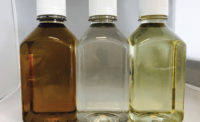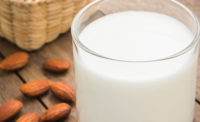Clean labels are well-nigh inescapable these days. But when the labels in question get slapped on a category that devotees describe variously as devilish, sinful, addictive and decadent — all in a good way, of course — it’s worth asking whether having a cleaned-up label is even desirable, let alone possible.
And that’s the case that cocoa and chocolate find themselves in. Both are universally beloved in no small part thanks to the transgressive, no-holds-barred indulgence they lend to anything made with them. Consumers don’t just crave their taste and texture, after all; they crave their inherent air of low-stakes licentiousness.
Yet recent commitments from candy kings like Nestle and Hershey to scrub their labels of artificial and otherwise objectionable ingredients suggest that someone out there is asking for cleaned-up cocoa and chocolate. So we gathered leading cocoa and chocolate experts for a discussion of just what clean means with respect to Americans’ favorite guilty pleasures. And we explored how cocoa and chocolate suppliers are developing ingredients that let dairy processors temper their products’ chocolatey, cocoa-rich vice with clean-label virtue. What follows is an edited version of that conversation.
Dairy Foods: Let’s start by looking beyond chocolate, cocoa and even dairy to the food and beverage industry generally. Is clean labeling good for business?
Joe Sofia, chocolate specialist and account manager, Cargill Cocoa & Chocolate, Lititz, Pa.: I’d say the clean-label trend brings a large opportunity for innovation related to better-for-you products as part of a larger health-and-wellbeing macro trend. Consumers are becoming increasingly interested in overall wellbeing, and they’re starting to avoid certain ingredients while seeking out others.
Dairy Foods: So we can view clean labeling as an opportunity, not a burden. When it comes to guilty pleasures like cocoa and chocolate, does the clean-label trend even apply?
Rick Stunek, marketing and sales, Forbes Chocolate, Broadview Heights, Ohio: I don’t know of much that’s exempt. Cocoa and chocolate certainly aren’t.
Rinus Heemskerk, global director of innovation, ADM Cocoa/deZaan, Rolle, Switzerland: Clean label a clear consumer trend that drives across all categories. You only have to look at recent statements from major food companies to realize that.
Dairy Foods: What manner of clean-label requests are you getting from your customers, and for which dairy applications? Further, what are their consumers asking for from them?
Stunek: We see the demand across the board, to varying degrees. I can’t say that any one segment is more interested than any other. Some customers are farther ahead than others, but we have customers from all markets working on this.
Jenna Derhammer, R&D, applications manager, Blommer Chocolate Co., Chicago: Frozen novelties seem to be driving a lot of the requests for cleaner labels.
Heemskerk: The drive in ice cream has been very clear as companies are coming out with all-natural versions of their products.
Dairy Foods: I’m getting the impression, then, that clean labeling is a largely consumer-driven phenomenon. Is it also largely consumer defined?
John Pimpo, sales manager – East, ingredients & contract manufacturing division, Gertrude Hawk Chocolates, Scranton, Pa.: Correct. It comes down to customers and their consumers’ perception of what a clean deck looks like for cocoa and chocolate.
Dairy Foods: What does FDA have to say about clean-label cocoa or chocolate?
Sofia: Chocolate is defined by a U.S. Food and Drug Administration Standard of Identity. There are strict guidelines for milk, dark and white chocolates, and if the guidelines aren’t met, a product cannot be labeled as “chocolate.” For example, milk chocolate must contain a minimum of 10% chocolate liquor, 12% milk solids and 3.39% milk fat. The standards for all chocolates specify that only nutritive carbohydrate sweeteners be used and that optional flavors cannot imitate the flavor of milk, cream or butter. All chocolate must also be made with cocoa butter.
Dairy Foods: Then can we simply adopt these standards of identity, as laid out in the Code of Federal Regulations, as a sort of proxy clean-labeling guideline for cocoa and chocolate?
Stunek: No. Government standards have little to do with public opinion. The public trusts the government only slightly more than it trusts private business. Public opinion is driven by whichever activists can figuratively scream the loudest on the Internet and through the media. So most government laws and regulations have minimal influence on the public’s accepted standards relating to food.
Dairy Foods: In the end, our dairy-industry readers are trying to find some sort of working definition of “clean” to apply to their cocoa and chocolate ingredients. If you could write the rules, what criteria would you give them?
Sofia: With no set definition, clean-label can mean different things to different consumers and food companies. Commonly, natural or clean products may be free of artificial preservatives, added colors, artificial flavors, artificial sweeteners and/or hydrogenated fats. They may be perceived as being minimally processed with a shorter ingredient list.
Pimpo: Most can agree that a clean deck does not include artificial colors, artificial flavors, partially hydrogenated oils, et cetera. That is: ingredients that the average person generally can’t pronounce.
Derhammer: There does seem to be a draw toward “cupboard ingredients,” meaning ones that you might have in your pantry and can pronounce.
Dairy Foods: Let’s take a clean-label look at two ingredients that not only appear often in dairy formulations, but also can come in for criticism from the clean-label crowd: alkalized cocoa and chocolate-flavored compound coatings. First, let’s examine cocoa.
Sofia: Cocoa powders are universally used throughout many dairy applications, including dry mixes that are used in the fluid milk industry, ice cream, variegates and ice cream coatings. Typically, cocoa powder is used in place of chocolate because it’s easier to incorporate and provides more concentrated flavor. Generally, cocoa powder is less expensive than chocolate, as well.
Dairy Foods: What is alkalization, or dutching, and why do we do it to cocoa?
Heemskerk: Dutching is the process by which cocoa is treated with alkali before or after roasting to enhance flavor, color and solubility. It was invented by the Dutchman Coenraad van Houten in the early 1800s and has been in use ever since in the cocoa industry.
Derhammer: Cocoa is naturally slightly acidic, so alkaline agents may be applied to make the cocoa a more neutral pH. This alkalinization process also changes the color and flavor of the cocoa. It becomes darker and has a richer, deeper flavor.
Sofia: The right production conditions will ultimately provide the required color, varying from light brown to dark brown and even dark red. Alkalization also has a positive effect on the flavor of the final cocoa powder.
Dairy Foods: Why is dutched cocoa especially useful in dairy?
Derhammer: Dutched cocoa adds a lot of flavor and rich color to dairy products. It’s seen in yogurt and ice cream often, and can be in compound coatings used in frozen novelties.
Heemskerk: Many cocoa applications require stronger impact. Traditionally, the only option was to use so-called “natural” cocoa powder — but at high dose rates even to partly overcome the lack of sensory impact. Because cocoa does not dissolve but remains in suspension in dairy products, if you dose more of it, more also needs to be kept in suspension, increasing the risk of sedimentation and settling out. Cocoa processed with alkali would typically be used to deliver a richer cocoa taste and a bold, brown color.
Sofia: Working with cocoa powder in fermented dairy products, such as yogurt and cheese, can be challenging as a result of the acidity caused by lactic acid bacteria. Cocoa powder can add buffering capacity, which means that the cultures have to produce more acid to reach pH 4.6. This gives a higher titratable acidity and a tart flavor. When cocoa powder is used in fermented dairy, using a higher alkalized cocoa powder is the best option. And when formulating with a higher alkalized powder, a lower percentage of powder can be used in the formula without impacting flavor. This can help alleviate some of the off flavors generated in chocolate-flavored fermented dairy.
Dairy Foods: Sounds great to me. So what makes alkalized cocoa controversial from a labeling standpoint?
Derhammer: The label would have to read “cocoa processed with alkali,” “liquor processed with alkali” or “cocoa processed with specific alkalizing agent.” This is not considered natural.
Pimpo: Generally speaking, once you’ve alkalized cocoa, some customers will say that you’ve altered the original state of the product and, therefore, it’s no longer natural. Those customers will remedy this by using non-alkalized cocoa in their formulations.
Dairy Foods: Give us the backstory on how chocolate-flavored compound coatings differ from “real” chocolate.
Sofia: A compound is a blend of sugar, vegetable oil and other products, which may or may not include cocoa powder and/or chocolate liquor. Since compounds don’t contain cocoa butter, they don’t require tempering. Compounds aren’t defined by the U.S. Food and Drug Administration Standards of Identity, either. Therefore, any number of compound coatings can be developed with a variety of flavors, colors and performance levels based on the fat system used.
Dairy Foods: How does this flexibility convey an advantage over “real” chocolate in dairy applications?
Pimpo: From a performance standpoint, compound coatings are preferable because of the varied melt points that we can achieve. Traditional chocolate, while it can be formulated to have a clean label, tends to get hard and waxy once frozen and used in frozen desserts.
Dairy Foods: To what extent do concerns about genetically modified organisms factor into cocoa or chocolate’s clean-label profile?
Pimpo: We’ve seen an increase in customers looking for non-GMO ingredients, but it’s not tipping the scales toward an industry trend. There are definite pockets of the industry that are looking for this, and for some, it may become the norm.
Stunek: There’s no doubt that we’re helping some companies in looking for non-GMO products. But I don’t necessarily see it being as big an issue as clean labeling in general. Non-GMO is just one of the criteria some individuals use on their cleanliness scale. It resonates with some people much more than it does with others.
Dairy Foods: What other ways are suppliers shining chocolate’s and cocoa’s reputation?
Sofia: As the trend toward health and overall wellbeing continues to grow, the number of consumers looking for better-for-you products will increase. With this in mind, we expect dark chocolate to continue to grow in popularity. Dark chocolate is perceived to be a healthier option compared to milk or white chocolate.





